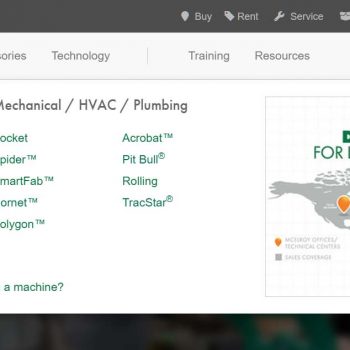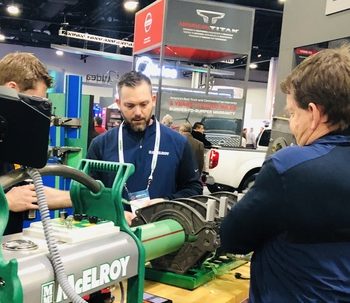Imagine if your health and livelihood depended on trekking across a hot and arid, rocky landscape for hours every day to collect water. This is life for 370 people in two of the poorest and most remote villages in the Ait Bayoud Commune of Morocco.
Local Peace Corps volunteers decided they deserved better. Five years ago, they initiated a water project and turned to the Columbia University chapter of Engineers Without Borders for help. EWB saw this as a great opportunity use their skills to improve these residents’ way of life in a very basic, but life-changing way.
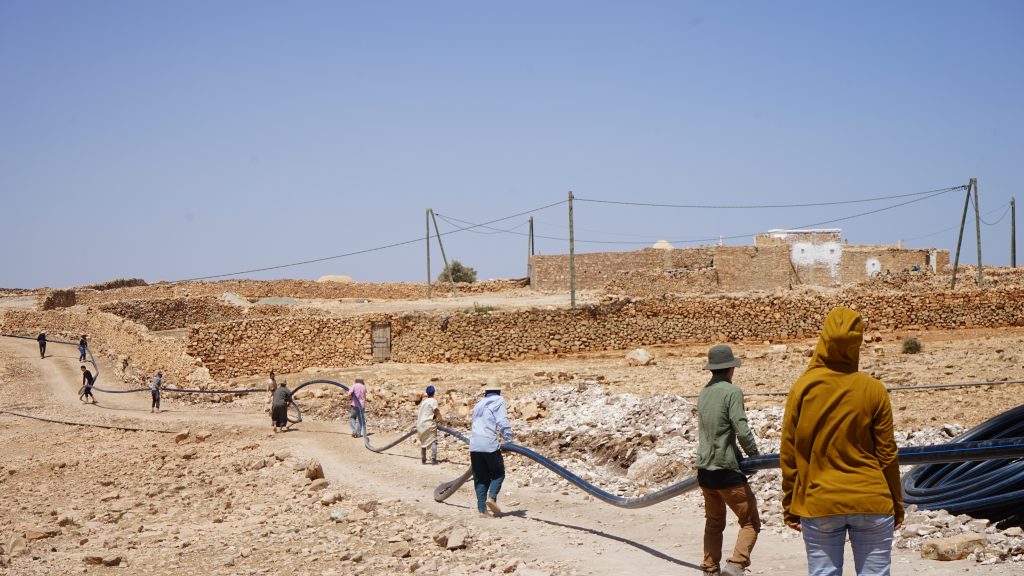
But designing a six kilometer, hybrid-pumped, gravity fed water pipeline system would only be part of the equation. These EWB college students would have to secure funding, pipe, materials and equipment and they would have to do all that in addition to school work, writing their thesis not to mention a short, six-week window for the installation.
As they were researching various pipe materials, they were soon drawn to a high-density polyethylene (HDPE) system. To learn more, they contacted the Plastic Pipe Institute (PPI) and spoke to its director of engineering, Camille Rubeiz, who ended up mentoring them through the entire project. He also invited them to the PPI’s municipal board meeting in Tulsa, Okla., so they could meet some of the leading HDPE engineering experts across the country. While there, they were also able to visit McElroy, the leading maker of pipe fusion machines, and learn how to fuse pipe. They received further fusion training from ISCO Industries. At the end, eight of them were trained fusion operators.
To see that our collaboration worked was the most special moment and there was a huge sense of relief and also a feeling that things were going to change in this village. Life would be different now and this was the start.
— DONALD SWEN
“We saw many case studies on PE being used in the field,” said Donald Swen, EWB technical leader. “It was a big validation that we were onto something. Seeing the material, talking to engineers and being in Tulsa boosted our confidence in what we were doing.”
Now more than ever, they were sure HDPE was the way to go — no leaks, no corrosion, long life and low cost. And now that they had secured funding for the project from pipe manufacturers Borealis and Borouge, they would tackle another hurdle — communicating their honest intentions and building trust in the Islamic community.
“It was a project of many trials and error all within a country foreign to us,” Swen said. “Luckily, we had the help of three skilled translators who were able to navigate us through negotiations, purchases and many sticky situations. To say the least, we have learned a lot.”
With an eight-member team at any given time, the combination of students, professional mentors and locals toiled through an intense six weeks which culminated at the end of August. Each day, started at 7:30 a.m. They had lunch and avoided the heat from 1:30 to 3 p.m. then went back to work sometimes until 9 p.m.
“Things in Morocco happen sporadically. The solar panels were delivered at 1 a.m. We had to make things work and some of us sacrificed our sleep. We really worked to the bones,” Swen said.
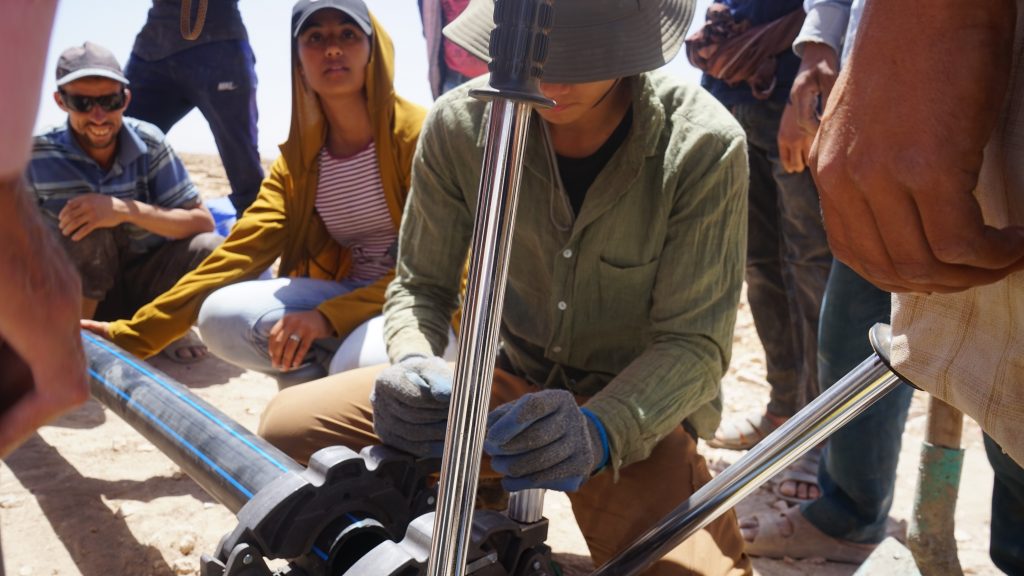
Borealis and Borouge, provided the PE100 90mm pipe for the project which was fused together with a McElroy Pit Bull® 14 machine — which fits 32mm to 110mm (1” IPS to 4” DIPS) size ranges — donated by McElroy.
“I fused the first 10 joints before falling into a supervision role. I guided the locals through each step of the fusion process. By the 20th joint, they were almost on auto pilot,” Swen said. “They know what to look out for to ensure a proper fusion joint. There must be full contact with the heater plate and a big emphasis on clean joints!”
The pipe was laid on grade. They hired a backhoe to expand a dirt road by about a meter. The backhoe cleared all the rocks and created a smooth surface.
It was a special and unforgettable day when they finally got to turn on the pump after connecting a 20-panel solar rack. Their first real world engineering project had come to fruition and they could feel the pipe getting heavier in the beginning sections as it filled with water.
“We drove to the other end of the pipeline and could hear the hot air being pushed out on the other end. We knew the water was coming and we knew when, we had the velocity calculations!”
Three hours later, they arrived at the village to check the end of the pipe. The locals had rerouted it into one of their dry wells and there was a crowd gathered around it watching a lot of water flow. As he approached, Donald said the villagers received him with deep smiles and eyes that spoke volumes. They said his name out loud and shook his hand. It was a special moment they were all able to share together. Their hard work had paid off.
“For the past few weeks, the locals had been coming out to help every day without pay,” Swen said. “To see that our collaboration worked was the most special moment and there was a huge sense of relief and also a feeling that things were going to change in this village. Life would be different now and this was the start.”
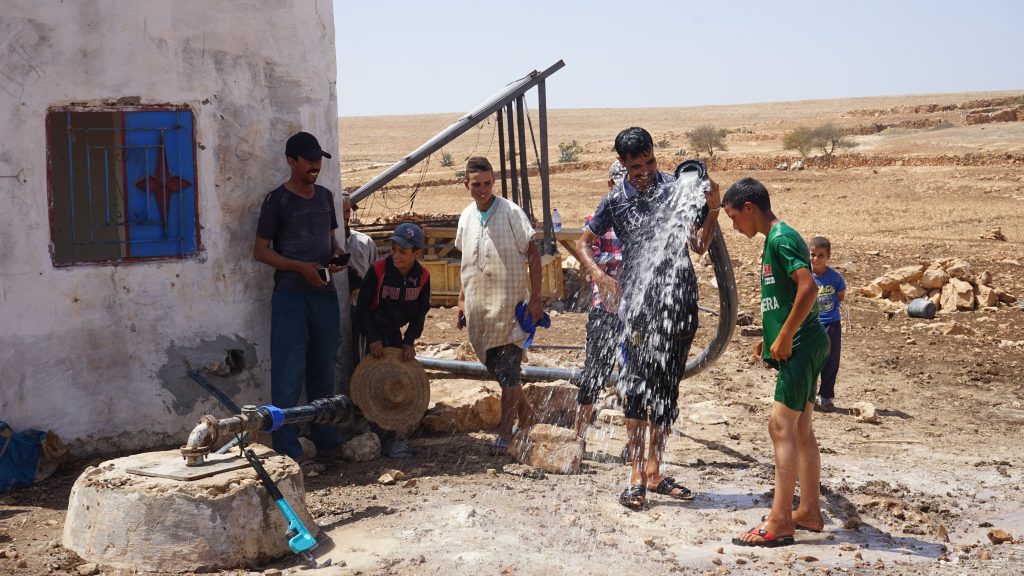
Swen said the Morocco project taught him a lot about the business world and working with all the different stakeholders to get things done. He learned the importance of doing things right, doing a thorough job the first time and the importance of safety in construction. In essence, the experience was life changing for Swen too.
“This reinforces my value of always placing humans first. Engineering starts with solving a need that originates from humans,” he said. “I know that in the future, I want to work with communities, empowering them to live their best lives. I want to continue doing meaningful work that can help others.”
Project mentor Rob Lawrence, CEO of ProjAC and a specialist in urban water supply in the UK, said the project was a lot of work and the students handled it really well.
“They did it in a very organized fashion despite the pressures on them. They kept everybody happy which is not easy,” he said. “Donald showed a lot of talent as a manager and overcame all the daily difficulties to get to the stage where they were able to get the water flowing. I was very impressed.”
The team plans to return next summer to expand the capacity of the system to the second village. Though they originally planned to provide service to both villages, funds were tight and time was limited so they scaled down the scope of the project to three kilometers.
Meanwhile, Swen said the residents are sending them updates on the pipeline through WhatsApp. Many of them are now fully trained in fusion procedures and they appear to have taken full ownership by forming a water association and making their own repairs and improvements. Currently, they are burying the pipeline to protect it permanently.
It is a striking change from when the EWB first arrived and had difficulty gathering a meeting of more than eight people.
“On our last day there, we held a community-wide meeting. Almost every man from every household came to the meeting. We can safely say that we had the trust of the community,” Swen said.
The fact that there are no leaks in the pipeline makes everyone very happy. Swen said they are immensely grateful to the PE industry for their support. “Everyone on the Municipal Advisory Board, the PPI, Peter Dyke (Alliance for PE Pipe) to all the people at McElroy. Their belief in us carried us through this effort.”
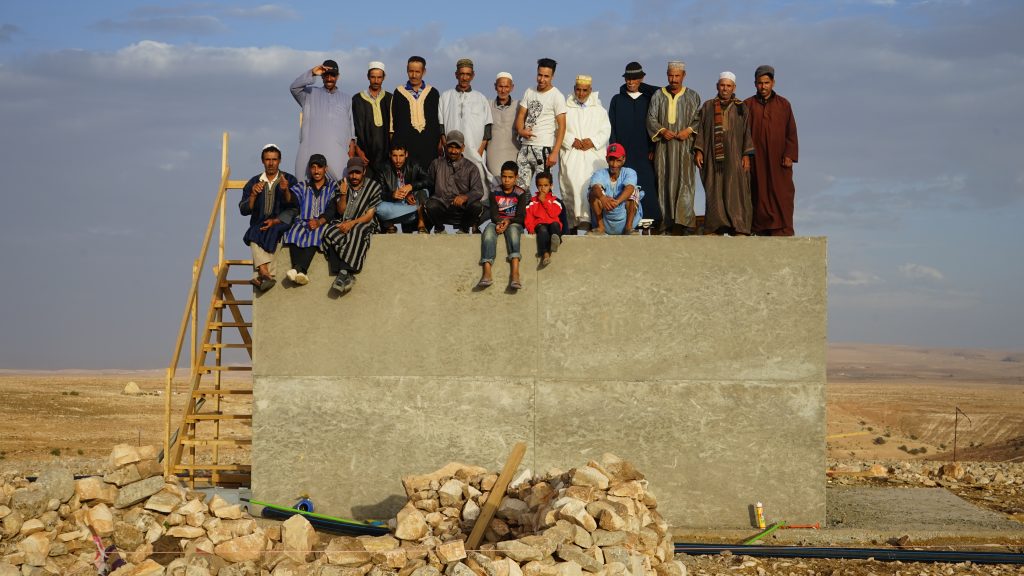
AT A GLANCE
Funding/sponsors: Borealis, Borouge, Plastima, the Moroccan government, Menara Holdings, CMGP, McElroy, ISCO and Georg Fischer
Mentors: Camille Rubeiz (PPI), Andrew Wedgner (Lyondell Basell), Rob Lawrence (ProjAC), Santiago Arnalich of Arnalich Water and Habitat, and Greg Scoby (Crossbore Consultants/City of Palo Alto, Calif.)
